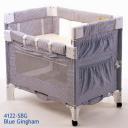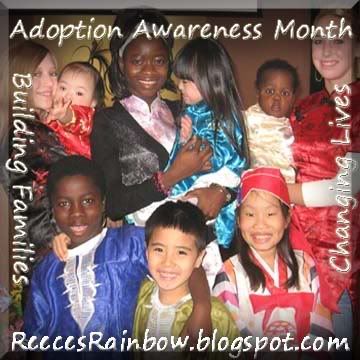
Early Childhood Intervention – Everybody’s Doing It!
 Well, maybe not everybody, but more and more families today are learning all about Early Childhood Intervention! I entered the world of developmental therapy as soon as my first child came home from the hospital because she had Down syndrome and was 100% tube fed. In my circle of friends with children with Down syndrome, therapy has been part of our normal day-to-day routine since our children’s birth. However, in my circle of friends who have healthy, typical children, developmental delays are far from uncommon and I have watched many friends of typical children enter the world of therapy I once thought was isolated to only children with “special needs.” One of the biggest reasons for this is people are recognizing the advantages of treating developmental delays early.
Well, maybe not everybody, but more and more families today are learning all about Early Childhood Intervention! I entered the world of developmental therapy as soon as my first child came home from the hospital because she had Down syndrome and was 100% tube fed. In my circle of friends with children with Down syndrome, therapy has been part of our normal day-to-day routine since our children’s birth. However, in my circle of friends who have healthy, typical children, developmental delays are far from uncommon and I have watched many friends of typical children enter the world of therapy I once thought was isolated to only children with “special needs.” One of the biggest reasons for this is people are recognizing the advantages of treating developmental delays early.
While it’s not uncommon for a child in any sandbox across the United States to be receiving some form of early intervention, nobody wants their child to have a developmental delay in any area. Watching your child achieve developmental milestones is probably one of the most rewarding things about parenting! When your child isn’t doing something that most of his peers are doing, it can be incredibly discouraging. It’s important to remember that typically, a delay in developmental milestones DOES NOT mean your child is not going to catch up! Most children who receive early intervention services catch up to their peers in their area of difficulty and no one knows the difference from that point on!
If your child does have a diagnosis that is going to stick with him or her long-term, you are far from the end of the world! I have a child who will always be behind her peers in most areas of development, however we wouldn’t change anything about her. In fact, she has brought so much joy and delight to our family, that we are adopting another child with Down syndrome . It took some adjustments because of continuous therapy, but we very much have a life outside of developmental therapy!
So, what exactly is Early Intervention?
- Early Intervention (sometimes called Early Childhood Intervention) was created by the United States Congress is 1986 to provide services for infants and toddlers under the age of 3 who have a developmental delay of any kind or a disability.
What services does Early Intervention provide?
- Physical Therapy {PT} – for children with gross motor delays {late sitting, late crawlers, late walkers, etc…}
- Occupation Therapy {OT} – for children with sensory issues, fine motor delays, feeding difficulty, cognitive delay, or a delay in social or emotional skills. {In very young infants, there is sometimes an overlap between OT and PT, so an Occupational Therapist may also treat some gross motor delays.}
- Speech Therapy {ST} – for children who are late to speak or have feeding difficulties
- Other services early intervention provides: Family education and counseling, Assistive technology devices and services, Audiology testing and services, Nursing services, Nutrition services, Psychological services, Service coordination, Social worker services, Vision evaluation and services, and some provide respite care for families!
What if my child is over 3 years old?
- If your child is 3 years old or older, they do not qualify for your state’s early intervention program. However, they do qualify for services through your public school system! Contact your school district if you suspect a delay in any area of your child’s development after they turn three years old.
Getting started
- If you think your child is taking a little too long in an area of their development, you can make either contact your child’s physician or you can contact your local early intervention provider. You do not need your physician to refer your child for services. You can find your local provider by going to your state’s website. Here is Texas’ listing of early childhood intervention providers. If you have trouble finding your early intervention provider, let me know and I will be happy to help!
- After you or your physician calls to make a referral, your early intervention provider will schedule a visit to your home to evaluate your child and determine if they are eligible for services. If your child is determined to have a delay, he or she will start receiving services shortly after the evaluation. That simple!
- Remember that every child develops at a different rate and do not accomplish milestones at exactly the same rate. If you have questions on whether your child is developing at an appropriate pace, contact your child’s pediatrician or your early intervention provider.
Here’s some more links for you!
- Developmental Milestones – Is This Typical?
- Bright Tots Early Childhood Intervention Information
- Wrightslaw: Early Intervention and IDEA (Wrightslaw is the go-to source for what the law says about what services children with delays are entitled to receive.)
Do you know anyone whose child is receiving services from Early Intervention? Has your child received services from Early Intervention? Do you have any other experience with Early Intervention?
- PS: In the spirit of National Adoption Month, I want to sneak this article in here (even though it has nothing to do with the topic at hand!) This article talks about the tax credit the IRS provides adopting families to help make adoption more affordable. Most people don’t know that they can receive up to an $11,000 dollar for dollar reimbursement for their adoption expenses!!
Share the fun: Email + Del.icio.us + Digg + Technorati











